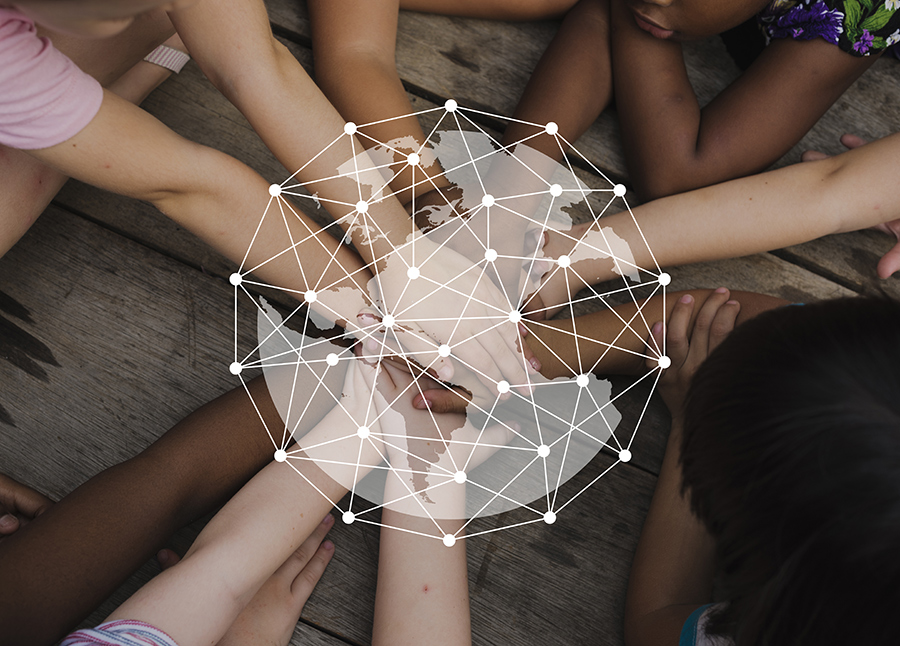Embracing Equity: How To Bridge The Digital Gender Gap
Kami Viswanathan shares thoughts on the importance of closing the digital gender gap to create long-lasting equity and inclusion for women in Asia Pacific, the Middle East and Africa.
As a female leader, I’m often approached to share thoughts, contribute to a project, or address audiences inside and outside the organization on a range of important topics. International Women’s Day, which falls on March 8th, typically features on the agenda.
However, moments in time come and go, and International Women’s Day is just one day out of 365. At FedEx, one thing we’ve been working towards over the years – even decades – is how to place female equality and empowerment on the agenda all year round. It’s critical that conversations around DEI are the constant drumbeat to our working routine. When it comes to actions that need to be taken to improve gender equity for women everywhere, progress and change need to be constant.
Shining a spotlight on technology
Of course, the focus or theme of each International Women’s Day can be helpful in signalling areas that need extra impetus or are most urgent to address. This year, events and campaigns are focusing on bridging the technology gap. The 2023 theme: “DigitALL: Innovation and technology for gender equality” sets out the following priorities:
Why is this so urgent? For starters, the UN Women’s Gender Snapshot 2022 report revealed that the exclusion of women from the digital world has caused a staggering loss of $1 trillion from the GDP of low-and middle-income countries in the last decade. The report warns that without proactive intervention, the shortfall will grow to $1.5 trillion by 2025.
However, moments in time come and go, and International Women’s Day is just one day out of 365. At FedEx, one thing we’ve been working towards over the years – even decades – is how to place female equality and empowerment on the agenda all year round. It’s critical that conversations around DEI are the constant drumbeat to our working routine. When it comes to actions that need to be taken to improve gender equity for women everywhere, progress and change need to be constant.
Shining a spotlight on technology
Of course, the focus or theme of each International Women’s Day can be helpful in signalling areas that need extra impetus or are most urgent to address. This year, events and campaigns are focusing on bridging the technology gap. The 2023 theme: “DigitALL: Innovation and technology for gender equality” sets out the following priorities:
- Address the digital gender divide
- Highlight the importance of protecting the rights of women and girls in digital spaces and addressing online gender-based violence
- Bring women and other marginalized groups into technology
Why is this so urgent? For starters, the UN Women’s Gender Snapshot 2022 report revealed that the exclusion of women from the digital world has caused a staggering loss of $1 trillion from the GDP of low-and middle-income countries in the last decade. The report warns that without proactive intervention, the shortfall will grow to $1.5 trillion by 2025.

The report also highlighted that gaping inequalities exist in STEM education and employment. Young women actually outnumber young men in tertiary education globally. Why, then, do women form the minority of students in STEM (science, technology, engineering, and mathematics) education at just 35%? For information and communication technology studies, this drops to 3%.
My own journey in STEM
Before I joined FedEx, I founded and ran an educational content company for many years. I was also an investor in technology start-ups, witnessing first-hand the impact of technology on opening up access to education and employability. Right now, we’re seeing disruptive technologies transforming work and workplaces. This presents both an opportunity and a threat for women’s participation.
On one hand, technology has helped increase access to upskilling and learning, which is often online and free. It’s also made remote work possible and highly effective. Using AI tech in recruiting has the potential to improve gender diversity by levelling the playing field to focus only on skills, competencies, and cultural fit.
On the other, the digital world can replicate real-world inequalities. There have been many incidences of AI adopting gender bias from humans, including Alexa and Siri. To overcome bias in AI, we need to make sure the workforce creating AI is diverse. For one thing, AI companies need to attract more women in tech jobs. But with the ratio of women in STEM so low compared to men, age-old biases and stereotypes play a role as women are made to believe they don’t belong in STEM. The danger is that women will get left behind if we don’t work to bridge this gap.
My own journey in STEM
Before I joined FedEx, I founded and ran an educational content company for many years. I was also an investor in technology start-ups, witnessing first-hand the impact of technology on opening up access to education and employability. Right now, we’re seeing disruptive technologies transforming work and workplaces. This presents both an opportunity and a threat for women’s participation.
On one hand, technology has helped increase access to upskilling and learning, which is often online and free. It’s also made remote work possible and highly effective. Using AI tech in recruiting has the potential to improve gender diversity by levelling the playing field to focus only on skills, competencies, and cultural fit.
On the other, the digital world can replicate real-world inequalities. There have been many incidences of AI adopting gender bias from humans, including Alexa and Siri. To overcome bias in AI, we need to make sure the workforce creating AI is diverse. For one thing, AI companies need to attract more women in tech jobs. But with the ratio of women in STEM so low compared to men, age-old biases and stereotypes play a role as women are made to believe they don’t belong in STEM. The danger is that women will get left behind if we don’t work to bridge this gap.

Three steps to closing the gap
The WEF Gender Gap report estimates that it will take another 132 years to close the global gender gap. Women’s participation in the workforce is increasing, with more representation and female leadership industry-wide. However, some of the structural problems women face still remain; societal expectations, organizational policies and bias, and lack of a care infrastructure.
According to the Women in the Workplace 2022 report from Lean In and McKinsey, women in leadership are switching jobs at the highest rate ever seen due to employers not meeting the expectations of female leaders. These expectations include a workplace focus on flexibility, employee well-being, and diversity, equity, and inclusion.
The WEF gender gap report suggests that there are three key areas where organizations must do more: inclusive hiring, internal mobility, and flexibility. We need to take a hard look at hiring practices, which must be inclusive and fair. Practical steps include removing bias from job descriptions, including women on interview panels, and having representative candidate shortlists.
The WEF Gender Gap report estimates that it will take another 132 years to close the global gender gap. Women’s participation in the workforce is increasing, with more representation and female leadership industry-wide. However, some of the structural problems women face still remain; societal expectations, organizational policies and bias, and lack of a care infrastructure.
According to the Women in the Workplace 2022 report from Lean In and McKinsey, women in leadership are switching jobs at the highest rate ever seen due to employers not meeting the expectations of female leaders. These expectations include a workplace focus on flexibility, employee well-being, and diversity, equity, and inclusion.
The WEF gender gap report suggests that there are three key areas where organizations must do more: inclusive hiring, internal mobility, and flexibility. We need to take a hard look at hiring practices, which must be inclusive and fair. Practical steps include removing bias from job descriptions, including women on interview panels, and having representative candidate shortlists.

There should be more support for women’s internal mobility and progression. This means creating a targeted mentoring and training programs for women – in particular at the pre-manager level – and increasing awareness about unconscious bias within organizations. And with LinkedIn data showing women are 24% more likely than men to apply to remote roles, we need to make flexible working the norm for everyone if we want a diverse pool of talent.
All genders must champion equity
I’m proud to be part of an organization that values diversity so highly and seeks protectively to create an inclusive environment. I’d encourage our female team members to continue your lifelong learning and seize each opportunity to grow through mentorship and training. And to our male colleagues, remember that gender equity is a priority for all of us, not just women. I encourage you to actively support the growth and progression of all team members on our path to gender equity.
Finally, I believe it’s significant that the theme of the 2023 International Women’s Day is to “embrace equity”; a shift from the language of previous years which focused on equality. Equality is of course important, but equity pushes the bar higher, and acknowledges that we need to do more to enable everyone to leverage those opportunities . It calls for creation of a level playing field by proactively addressing barriers and developing solutions that are inclusive, including those in tech, STEM, and digitalization.
All genders must champion equity
I’m proud to be part of an organization that values diversity so highly and seeks protectively to create an inclusive environment. I’d encourage our female team members to continue your lifelong learning and seize each opportunity to grow through mentorship and training. And to our male colleagues, remember that gender equity is a priority for all of us, not just women. I encourage you to actively support the growth and progression of all team members on our path to gender equity.
Finally, I believe it’s significant that the theme of the 2023 International Women’s Day is to “embrace equity”; a shift from the language of previous years which focused on equality. Equality is of course important, but equity pushes the bar higher, and acknowledges that we need to do more to enable everyone to leverage those opportunities . It calls for creation of a level playing field by proactively addressing barriers and developing solutions that are inclusive, including those in tech, STEM, and digitalization.

To me, this vision is exciting because of the positive outcomes it creates for everyone, not just women. Gender diversity and inclusivity are not only the right things to pursue, but make business sense.
For more tips on how to address gender imbalance at work or to discover stories of female-led entrepreneurship, visit our Small Business page now.
A version of this article first appeared in The Economic Times on 8 March, 2023.
For more tips on how to address gender imbalance at work or to discover stories of female-led entrepreneurship, visit our Small Business page now.
A version of this article first appeared in The Economic Times on 8 March, 2023.
***




















 The Latest
The Latest